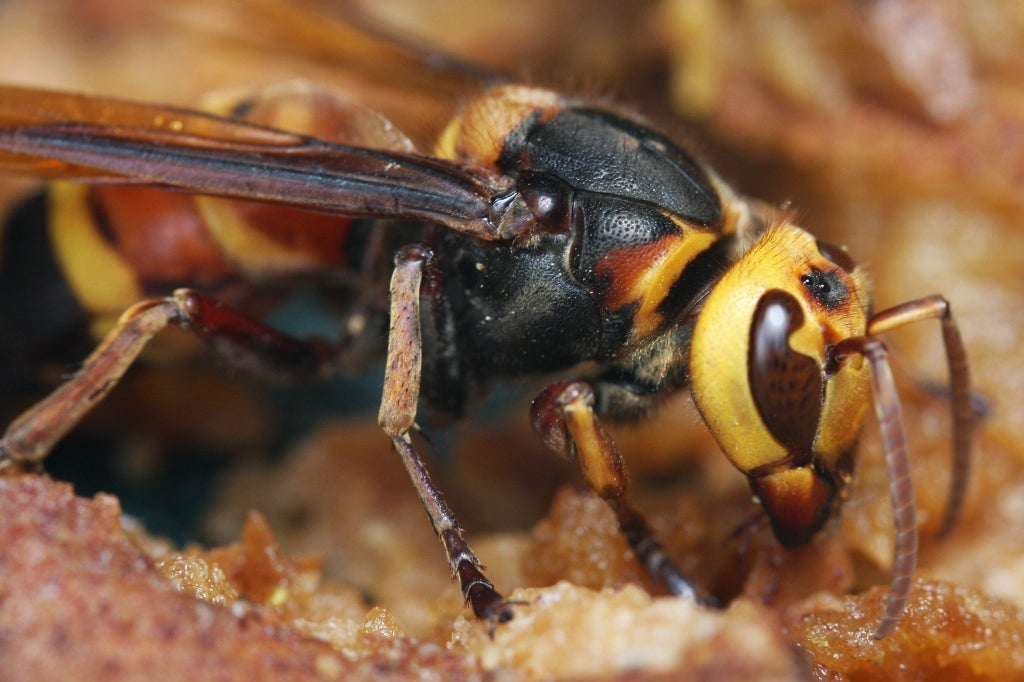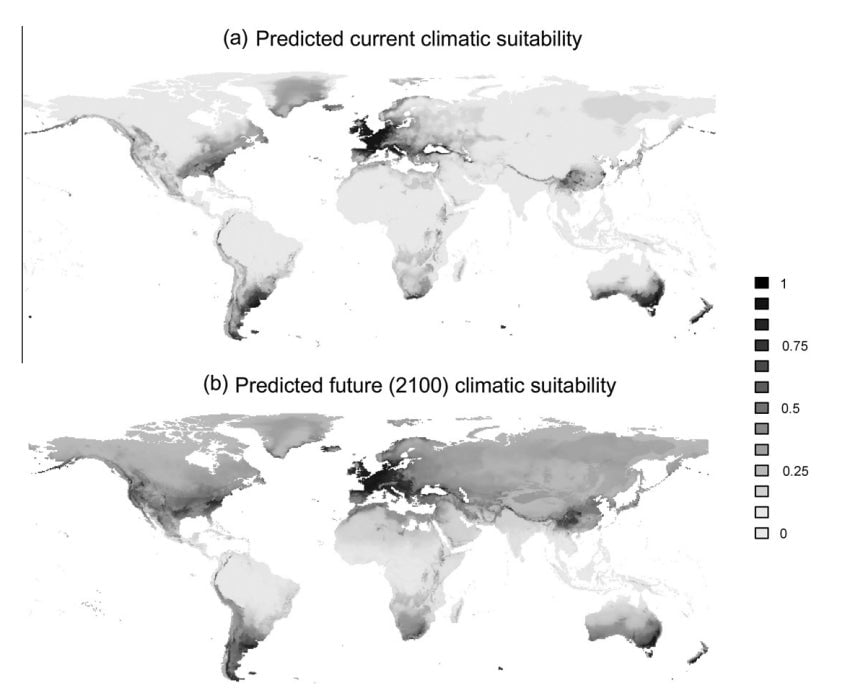Thank you global warming: Giant hornets are killing dozens in China and eating bees across Europe.
A plague of hornets, each the size of a human thumb, have descended on Shaanxi province this summer—at least 28 have been stung to death (link in Chinese), while another 419 have been injured, according to a local news report from China Radio Network (CRN), via the New York Times’ Chris Buckley. The death toll from hornet attacks in Ankang city is more than twice the annual average between 2002 and 2005, say the Ankang police, as the Guardian reports. A local doctor said hospitalizations due to hornet attacks have risen steadily over the years (link in Chinese).


A plague of hornets, each the size of a human thumb, have descended on Shaanxi province this summer—at least 28 have been stung to death (link in Chinese), while another 419 have been injured, according to a local news report from China Radio Network (CRN), via the New York Times’ Chris Buckley. The death toll from hornet attacks in Ankang city is more than twice the annual average between 2002 and 2005, say the Ankang police, as the Guardian reports. A local doctor said hospitalizations due to hornet attacks have risen steadily over the years (link in Chinese).
Why the uptick? The population of Asian giant hornets (vespa mandarinia), as they’re known, has surged largely because of climate change, says the Shaanxi Provincial Forestry Department (link in Chinese). The average winter temperature in Ankang rose 1.10 ℃ in the span of a few years alone, allowing more hornets to survive the winter. And it’s not just China; rising temperatures are behind the spread of another deadly Chinese hornets species, vespa velutina, in South Korea and Europe.
The chief prey of the Chinese hornet? Honeybees. As global warming makes more of the world hospitable to Chinese hornets, more honeybees are dying in the beepocalypse. Areas in Europe where they’re likeliest to invade “hold among the highest densities of bee-hives in Europe,” according to recent research. Here’s a heat map of where Chinese hornets will be able to survive as temperatures rise.

Japanese honey bees have figured out how to fight back, by cooking hornets. After surrounding a hornet in a spherical formation, Japanese honey bees engage their flight muscles, raising their collective temperature beyond what hornets can withstand.
European honey bees lack this skill. That’s why bee populations in France, where Chinese hornets arrived via a Chinese pottery shipment in 2005, have already taken a hit. Since then, Chinese hornets have spread at a pace of up to 100 km (62 miles) a year. Within the last three years, they’ve invaded Spain, Portugal and Belgium; soon they’ll arrive in Italy and the UK, says the European Environment Agency.
But the havoc climate change is wreaking on rural China are more immediate. Being stung feels “like a hot nail through my leg,” as one entomologist put it, and their venom can dissolve skin. They’re fast, too, flying up to 25 miles per hour (41 kilometers an hour). They’re also the largest hornets on the planet, reaching 5.5 centimeters (2.2 inches). Via hornet blogger Kurt Bell, here a look:

Here’s a chilling scene that Chen Changlin, an Ankang farmer, witnessed one evening a few days ago. As he harvested rice on evening, hornets swarmed a woman and child working nearby. When they reached Chen, they stung him for three minutes straight. Chen made it; the other two died. “The more you run, the more they want to chase you,” said another victim, whose kidneys were ravaged by the venom. When he was admitted to the hospital, his urine was the color of soy sauce.

That species hasn’t spread outside of Asia yet, though sightings in the US of giant Asian hornets have been cropping up of late. If the Asian hornet spreads in the US, it could be an even bigger threat than the Chinese hornet. They too thrive on killing honey bees. Not only are they five times bigger, but their huge jaws allow them to decapitate bees so quickly that one giant hornet can kill 40 bees a minute. A swarm of fewer than 30 can wipe out a 30,000-strong honeybee colony in just a few hours.